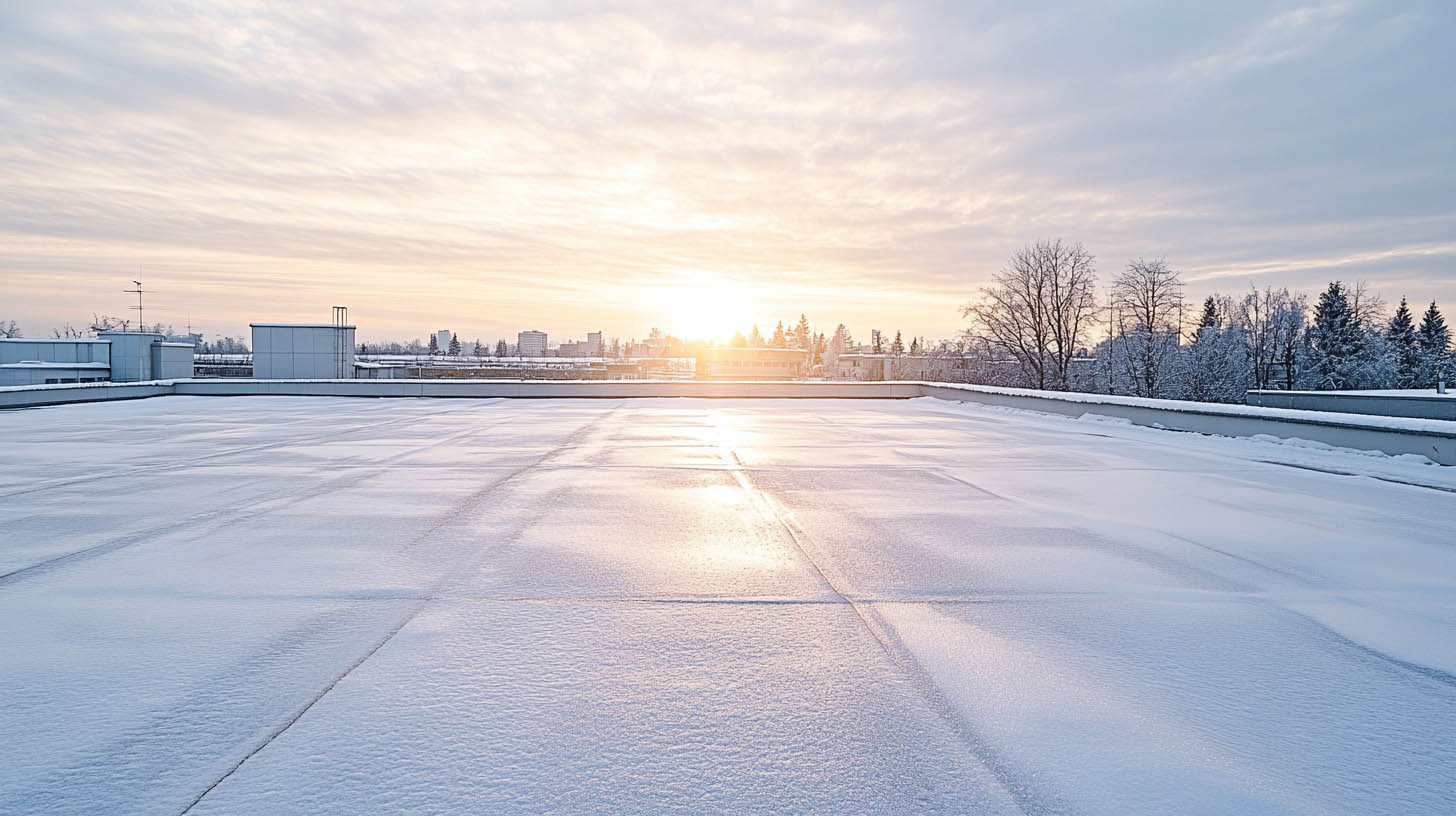
When it comes to protecting your business property during harsh winters, having a reliable roof is non-negotiable. Contrary to popular belief, commercial flat roofing, when properly designed and maintained, can withstand snowy conditions effectively. At Rainstoppers Roofing, located in Charleston, WV, we strive to educate our customers about roofing myths to ensure they make informed decisions about their investments.
Misconception 1: Flat Roofs Can’t Handle Heavy Snow
A common belief is that flat roofs collapse under the weight of accumulated snow. While poorly maintained or outdated flat roofs may face challenges, modern flat roofing systems are engineered to withstand snow loads effectively.
How Modern Flat Roofs Manage Snow
- Structural Support: Engineers factor in local snow load conditions and building requirements when designing flat roofs.
- Materials and Design: Today’s roofing systems use advanced materials and slight slopes to facilitate drainage.
Did you know? The International Building Code (IBC) requires roofs to be designed for specific snow load capacities, ensuring safety and structural integrity in snow-prone areas.
Misconception 2: Flat Roofs Are More Prone to Leaks
Leaks are often associated with flat roofs during winters due to ice dams and pooling water. However, leaks are a universal roofing issue and can occur in pitched and flat roofs alike.
Preventative Measures for Leak-Free Flat Roofs
- Drainage Systems: Properly designed flat roofs incorporate gutters, drains, and scuppers to channel water efficiently.
- Slight Slope: Despite their name, flat roofs are never completely flat. A subtle pitch helps shed water and melted snow.
Tip: Regular inspections and maintenance ensure that your flat roof’s drainage system is functioning optimally.
Misconception 3: Flat Roofs Require Excessive Maintenance
Another misconception is that flat roofs demand constant attention, particularly during winter. While maintenance is crucial, it’s no more burdensome than other roofing systems when performed proactively.
Winter Maintenance Tips for Flat Roofs
- Clear Debris from Drains: Ensures water doesn’t pool during freeze-thaw cycles.
- Inspect Seams and Materials: Address wear and tear promptly to prevent leaks.
- Schedule Regular Inspections: Partner with professionals to ensure your roof remains in top shape.
Benefits of Modern Flat Roofing Systems
Choosing a flat roof for your commercial property comes with distinct advantages:
- Cost-Effectiveness: Flat roofs require fewer materials, reducing initial installation costs.
- Energy Efficiency: Their design supports the installation of energy-saving technologies like solar panels.
- Versatility: Flat roofs are ideal for HVAC installations or rooftop gardens.
Unique Fact: Flat roofs have been used in architecture for thousands of years, with some ancient Egyptian structures featuring flat roofing systems to shield against the desert’s harsh elements.
Conclusion
Commercial flat roofing, when properly maintained, offers a reliable and cost-effective solution for businesses in snowy climates. Dispelling these misconceptions allows property owners to make informed decisions about their roofing needs. Rainstoppers Roofing, a GAF Master Elite contractor, ensures durable, high-performance roofs tailored to every season.
FAQs
1. How do flat roofs handle snow accumulation?
Modern flat roofs are designed with robust structural support and drainage systems to manage heavy snow loads effectively.
2. Are flat roofs more prone to ice damming than pitched roofs?
No, ice damming depends on insulation and drainage, not the roof’s design. Proper maintenance minimizes the risk for flat roofs.
3. Can a flat roof last as long as a pitched roof?
Yes, with proper care and professional installation, flat roofs can last 20–30 years or more.
4. What is the ideal material for flat roofs in snowy areas?
Modified bitumen and thermoplastic membranes like TPO are excellent options for durability in snowy climates.
5. Is a flat roof more affordable to maintain than a pitched roof?
Yes, flat roofs often require less material and are easier to access for repairs, making them cost-effective over time.
If you want to read a blog about winter weather hazards for commercial roofs, click here.
